Getting started
Constraint
There is only one Constraint
As you may have noticed by now, our step-by-step procedure is focused on Constraint.
Constraint, in our context, is anything that restricts the flow of value through the system.
constraint in common use
Commonly, constraint means to restrict or confine something within prescribed bounds. It is something that restricts, limits, or regulates.
When we commonly think of a system, the system has many constraints. In other words, there are many parts of the system that are restricted, confined, limited, or otherwise regulated.
For example, when we think of our example Tea Shop, we can imagine many constraints:
- limit to how many people can fit in the shop
- limit to how many hours staff can work
- limit to the amount of our inventory
- limit to how expensive supplies can be to maintain profitability
- limit to how much people are willing to pay for tea
- regulations regarding how much of revenue must go to taxes
A Tea Shop, like any system, is full of these common constraints.
While these constraints are real and part of our every day life, they will not be useful in our step-by-step approach to strategy. For that, we will consider a Constraint with a capital "C".
Constraint how we will use it
There is only one Constraint.
In order to make progress with our step-by-step approach to strategy, we need to have focus, a focal point where we will apply our steps. For that, we need Constraint with capital "C".
Our Constraint will be the part of the system that is the most limiting for the flow of value through the system.
Let's revisit our tea shop example to develop our intuition. As before, we have a Value Chain where the Public expresses a need for Tea that is fulfilled by the Tea Shop.
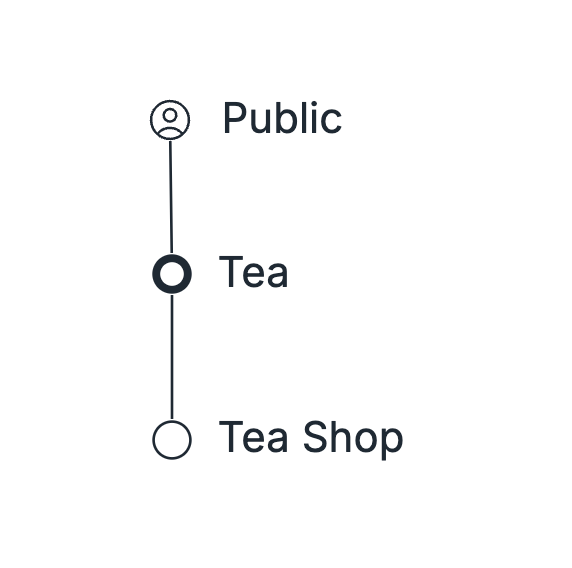
From the perspective of the Tea Shop owner, the flow of value goes from the Tea Shop to the Public. The Public, in turn, pays for Tea with money for the value.
Let's make this example more specific. If the Tea Shop makes Tea to sell for $2/cup, and it sells 80 cups/day, then the flow of value is $2/cup * 80 cups/day = $160/day. Let's annotate our Value Chain.
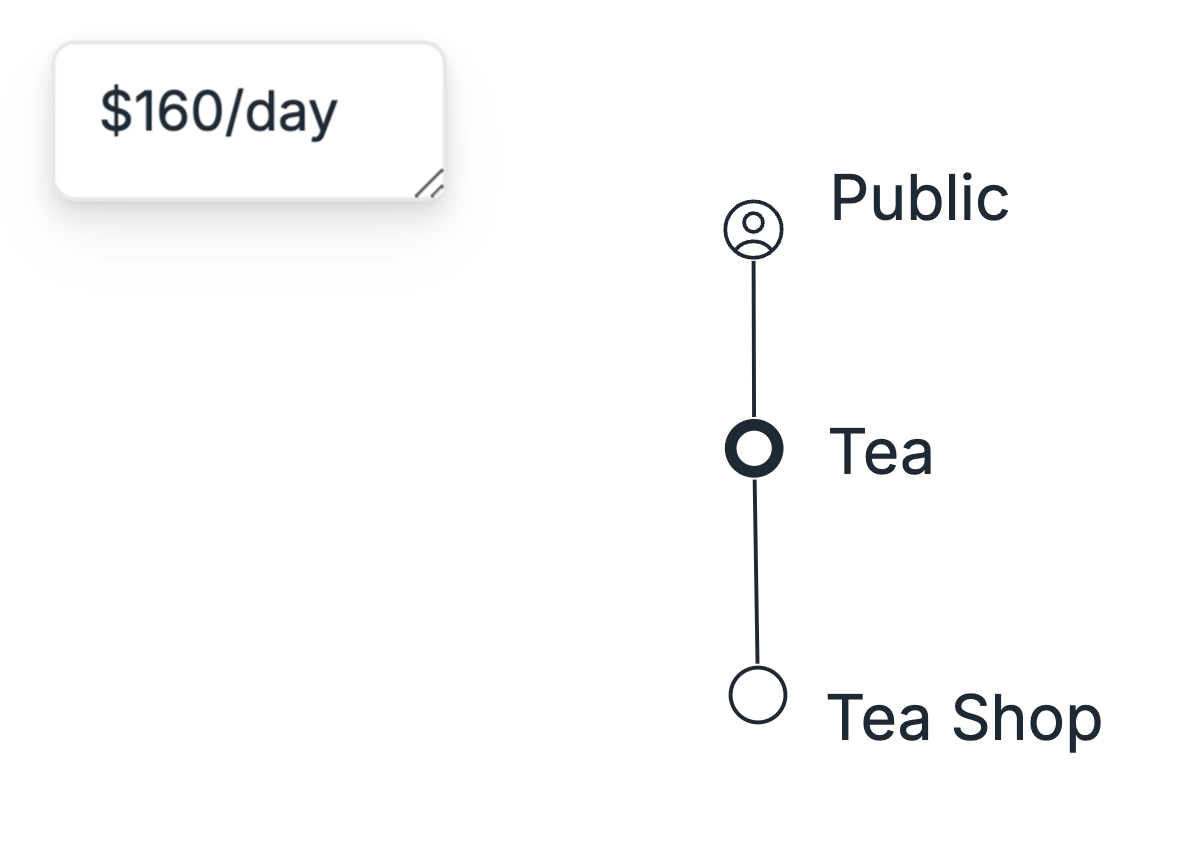
Now, let's explore why this Value Chain with three elements: Public, Tea, and Tea Shop can have only one Constraint. We have the benefit that the system is minimal, so let's consider what happens if each of the three elements is the Constraint.
If the Constraint is the Public, that means that only 80 people show up per day, each buying one cup. Every person wants Tea, so the need is not a Constraint. We show this by illustrating what would happen if 200 people showed up and calculating that based on 100% need, the flow would be $400/day. In this scenario, the Tea Shop could easily make 300 Tea per day, so Tea Shop is also not a Constraint. This scenario is illustrated below.
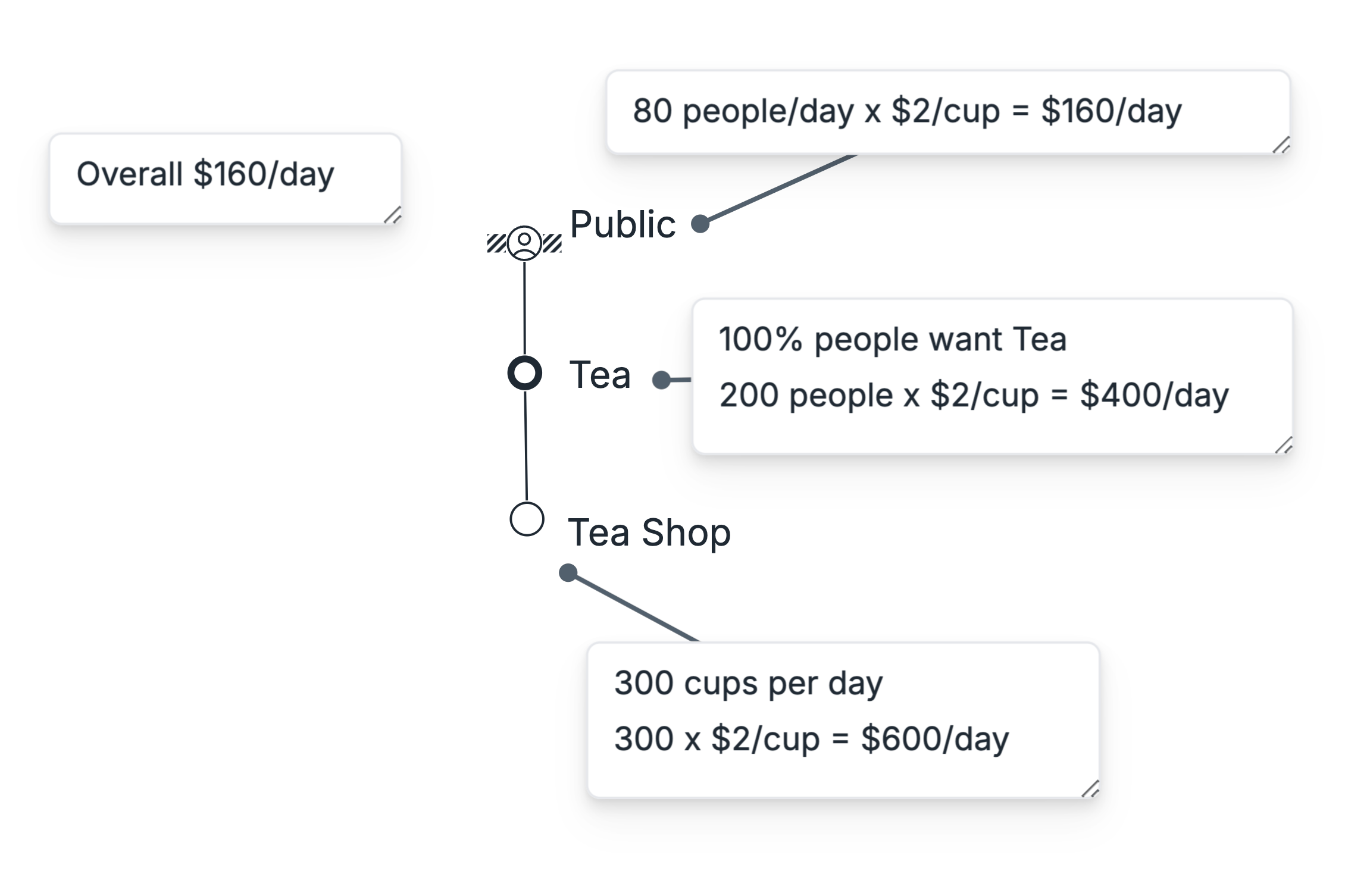
If the Constraint is the need for Tea, that means that 200 people show up to the shop, but only 80 of them (40%) want Tea. In this case, we have more than enough Public, the Tea Shop can still easily make 300 Tea per day, but only 80 of the 200 people that visit want Tea.
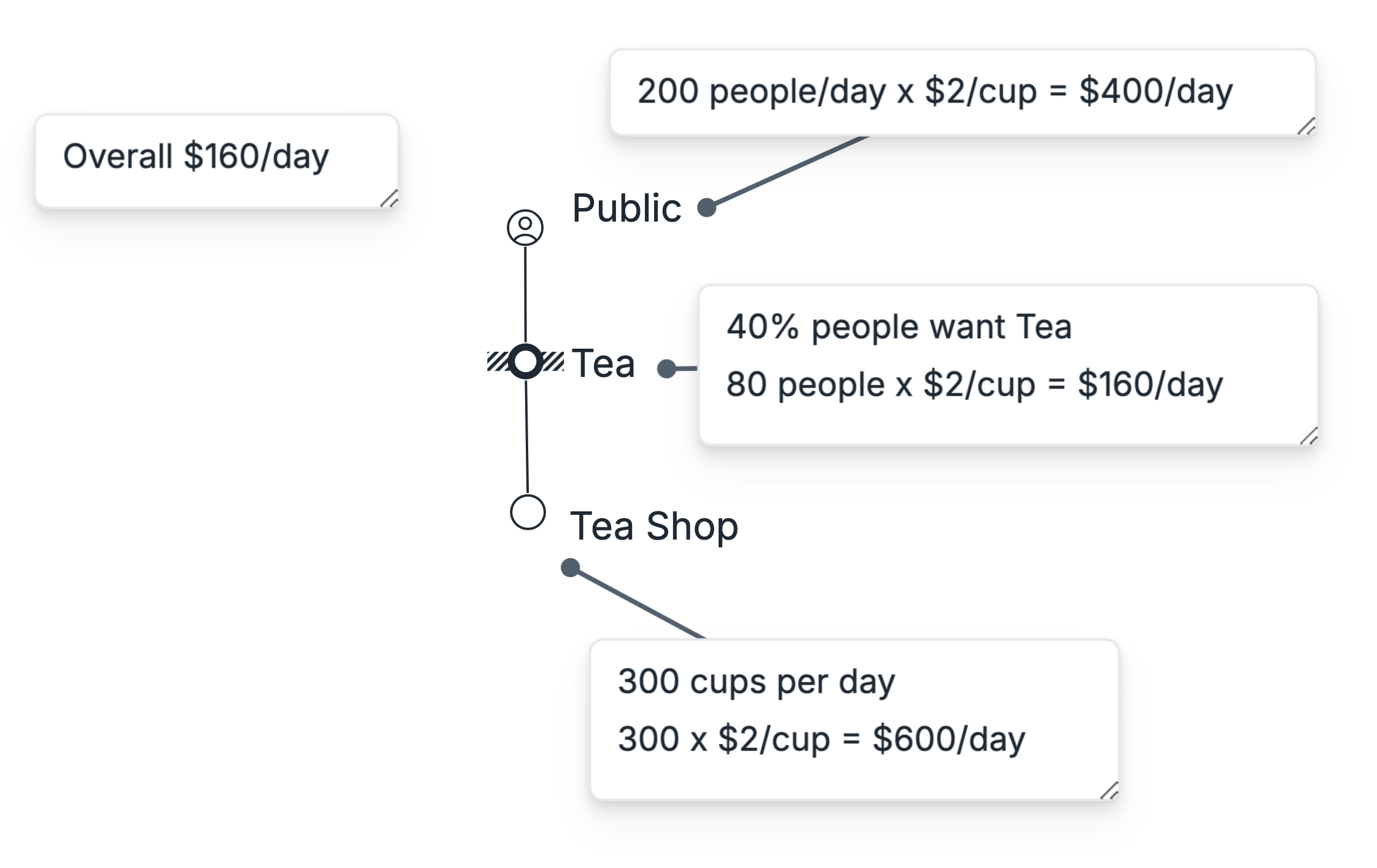
If the Constraint is the Tea Shop, that means we are only able to make 80 Tea per day. 200 people show up to the shop, so Public is not the Constraint. Also, 160 of them (80%) want Tea, so the need for Tea is not the Constraint. We are only Constrained by the capacity of the Tea Shop to make Tea.
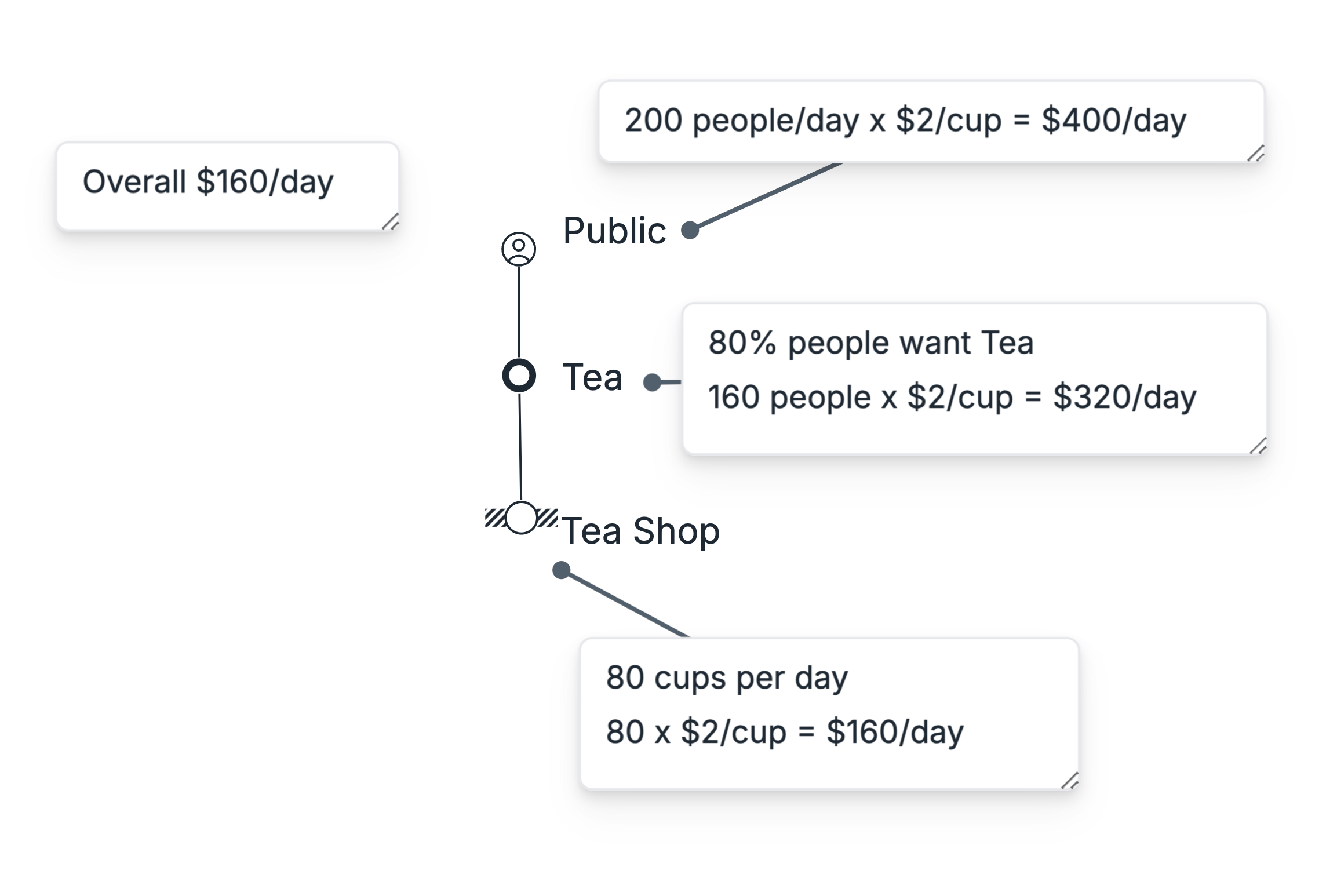
Now, notice that in any one of these scenarios, if we pick a non-Constraint and start to limit it, at some point, it will become the one Constraint.
For example, taking the last scenario, we reduce the need for Tea to 60%. However, with this reduction, the Constraint remains at the Tea Shop.
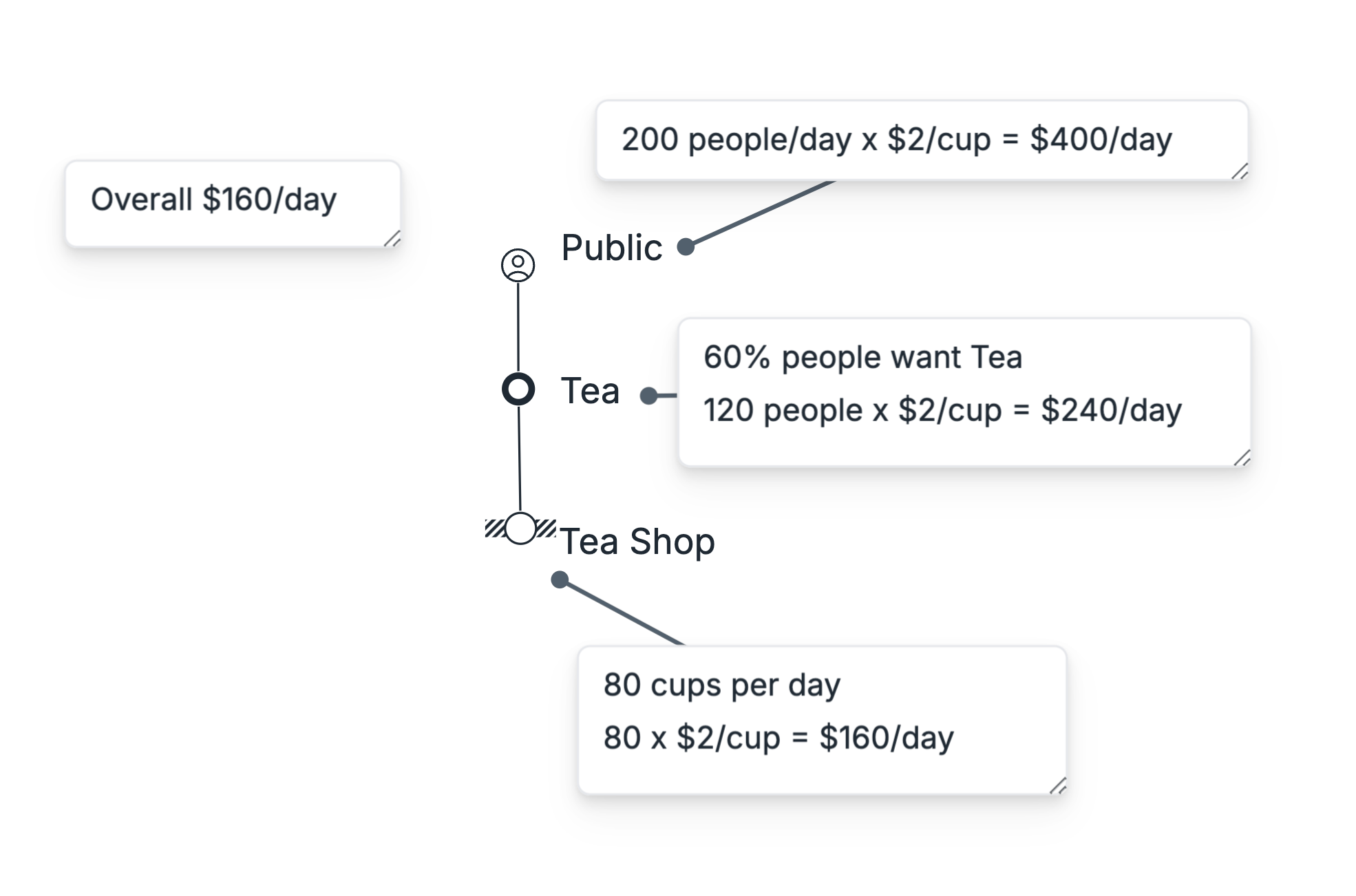
Taking this a step further, we reduce the need for Tea to 30%. At this point, the need for Tea becomes the new Constraint, and constrains the entire system to $120/day.
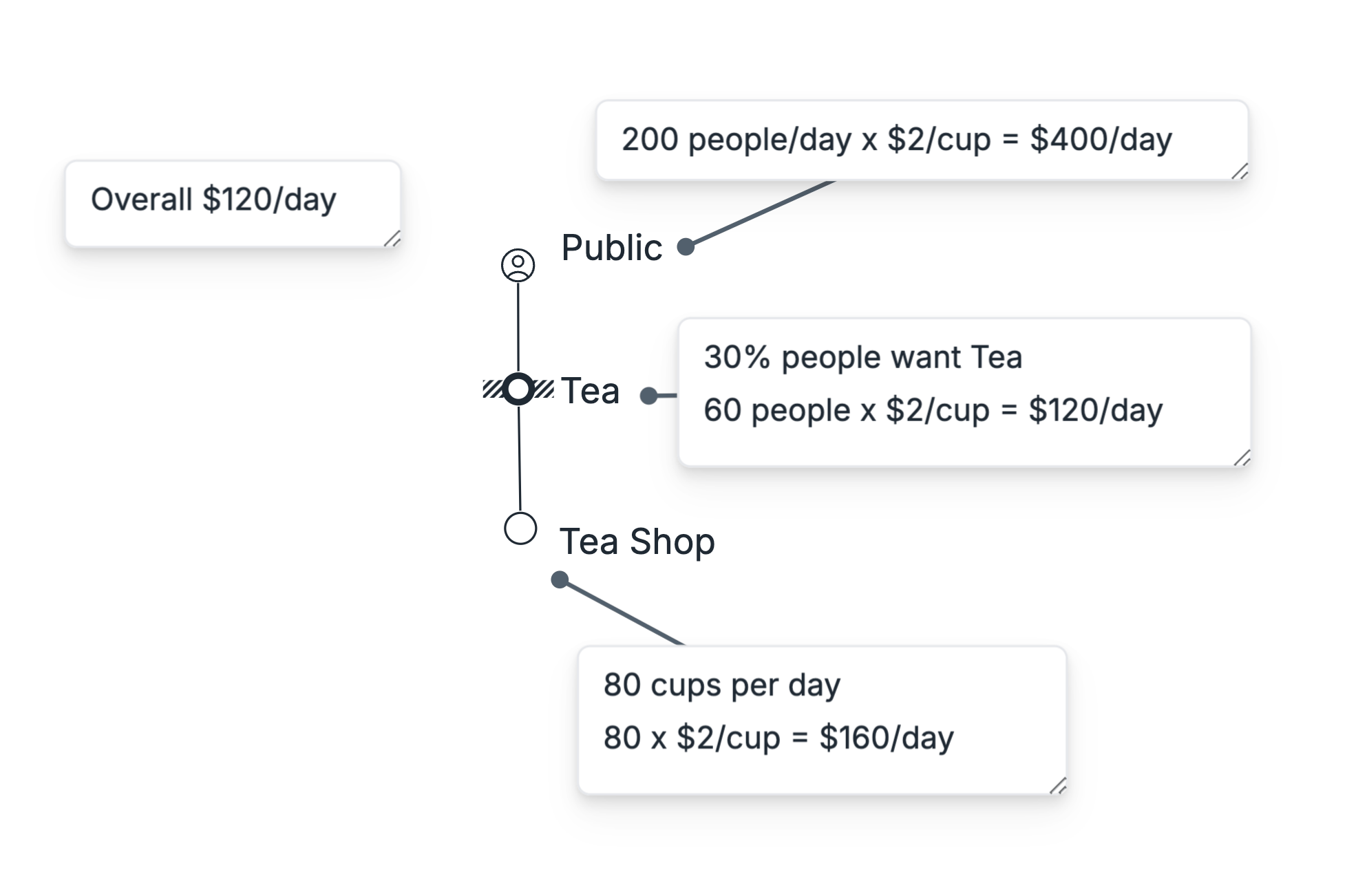
This is what it means that there is only one Constraint at any one time. While every part of the system has limits, only one of them is the most limited in such a way that limits the entire system. This is our Constraint.
You may have noticed that we conveniently skipped the 40% need for Tea which would make both the need for Tea and the Tea Shop the Constraint at $160/day, violating our rule of there being only one. The reason for this is that in the real world, this scenario is unlikely. For our purpose of step-by-step strategy introduction, we will continue to assert that there is only one Constraint.
Improving a non-Constraint
Before we proceed further, let's also take a moment to consider what improving a non-Constraint does to our overall flow of value.
Let's start again with our third scenario, where the Tea Shop is the Constraint and can make only 80 cups/day. The overall flow of value is $160/day.

Now, consider what happens if we start to improve a non-Constraint. Let's say that instead of 200 people per day, we are able to get 600 people per day into the store, with potential for $1200/day. How wonderful, spending money on those ads really worked! And because the need for Tea is unchanged at 80%, we have so many more orders for Tea with potential for $960/day!
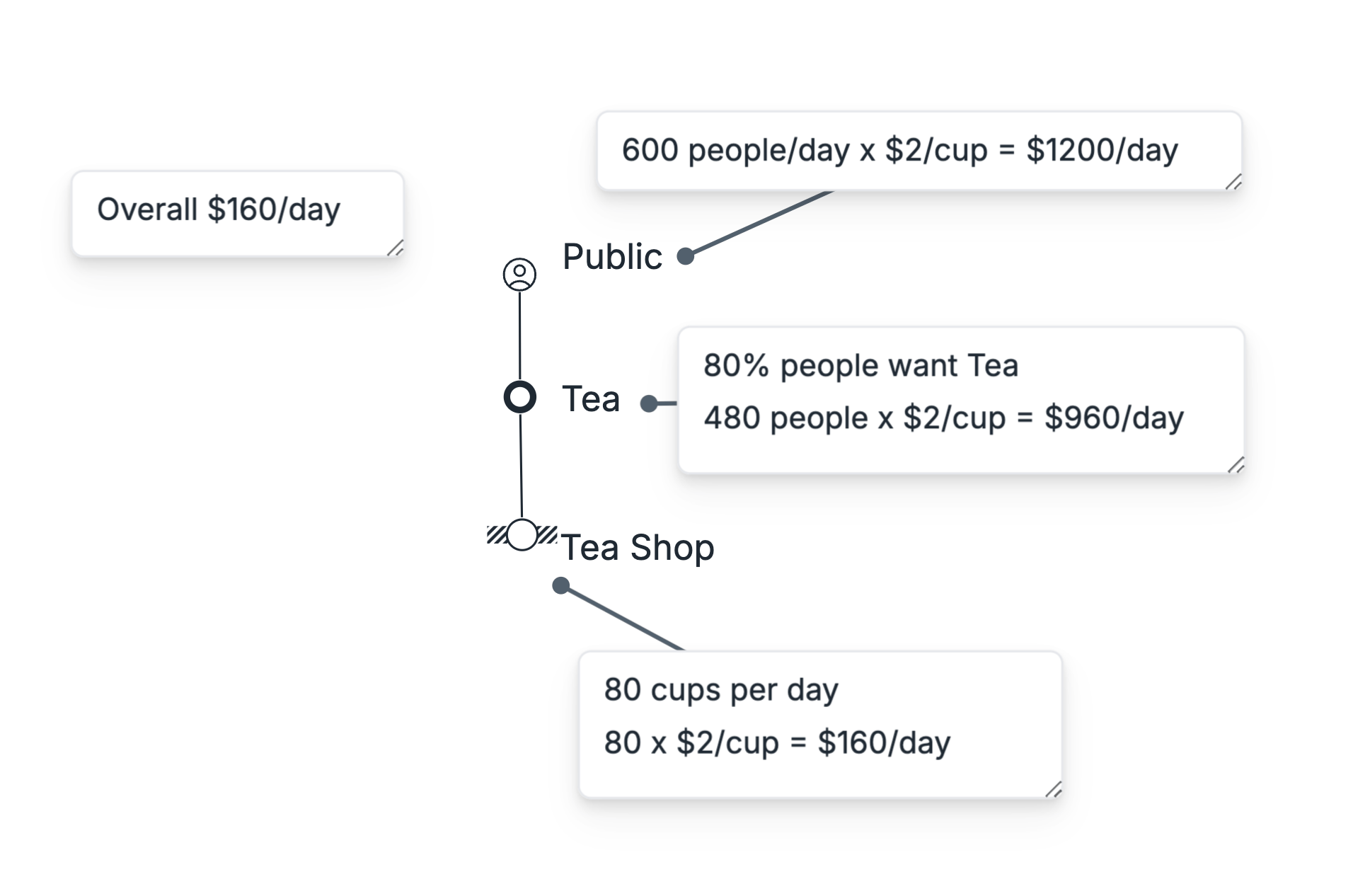
And yet, our Constraint being the Tea Shop, despite success elsewhere, the overall flow of value is still $160/day, because the flow of value is constrained by our Constraint.
This is the main reason why throughout this step-by-step guide we will be focusing on the Constraint. Focusing on the Constraint will give you the most leverage for improving the flow of value in your business, product, or system.1
Up next
Now that you are familiar with the overview of the step-by-step procedure and understand the concepts of Value Chain and Constraint, you should be ready to select the system for learning and begin.
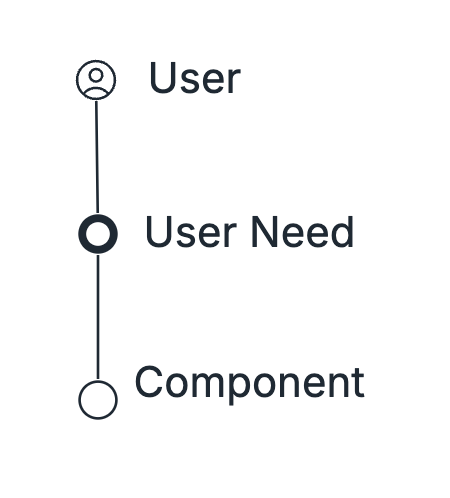
Go back
Value Chain
Learn how value flows through a system using a Value Chain, consisting of users, their needs, and components that fulfill those needs. This guide explains the basics and visual representations of a Value Chain in the context of a tea shop.
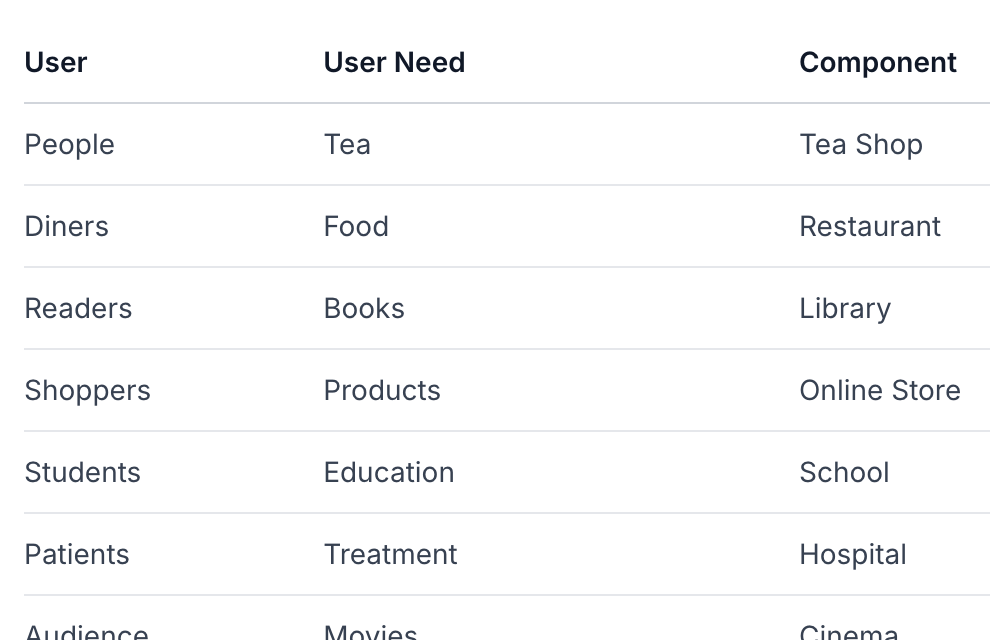
Up next
Select the system
Learn how to select a system for improvement using high-level Value Chains. Understand the importance of choosing a system that you care about and want to improve, and get started with identifying the system constraint.
You may be asking, what if I don't control what happens at the Constraint? How can I improve the flow of value? Don't worry, even if the Constraint is not in your control, you can still make improvements that affect the Constraint. How to do this will be covered in Focusing Step Three: Subordinate Everything Else to [Exploiting the System's Constraint].
